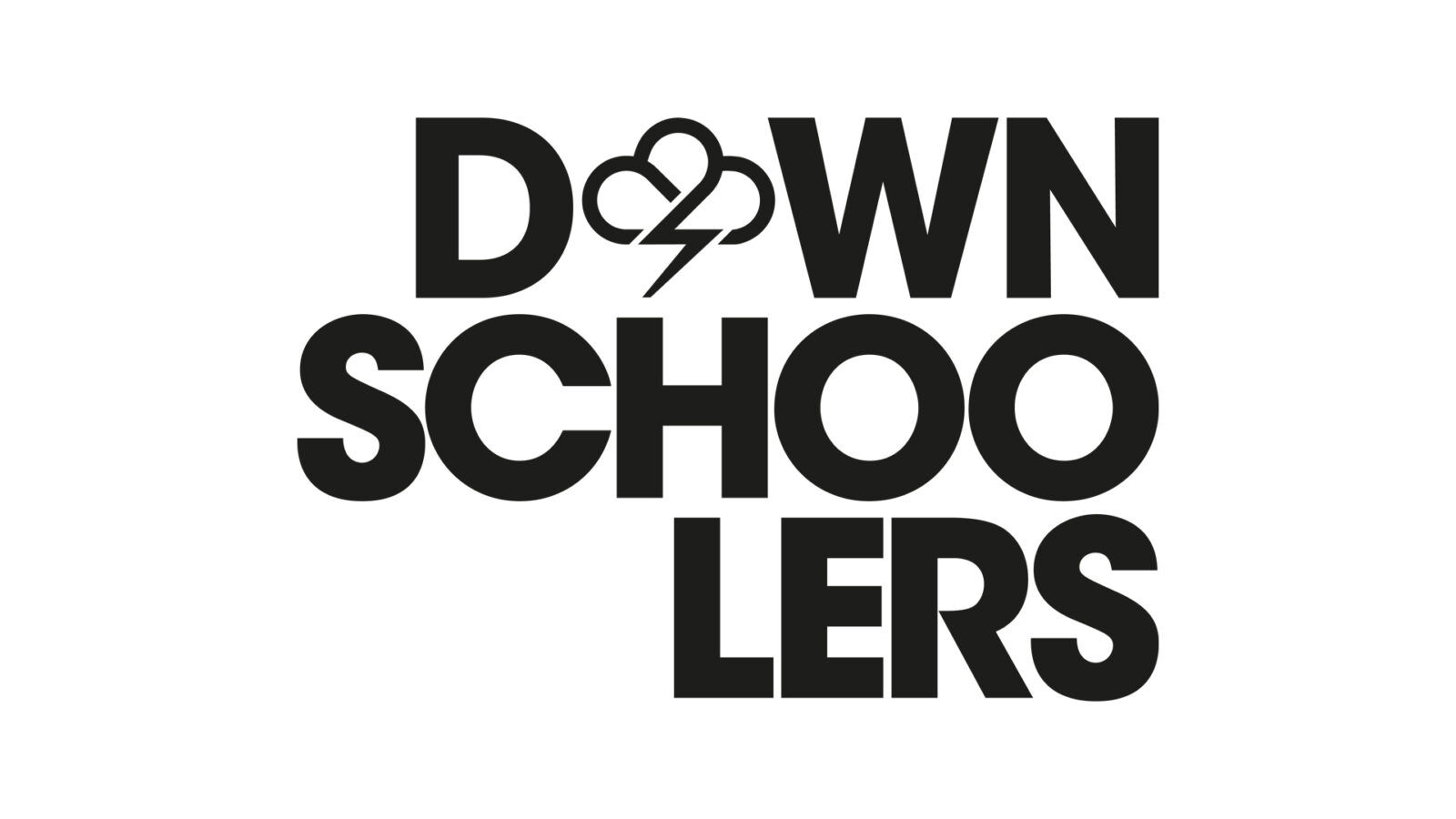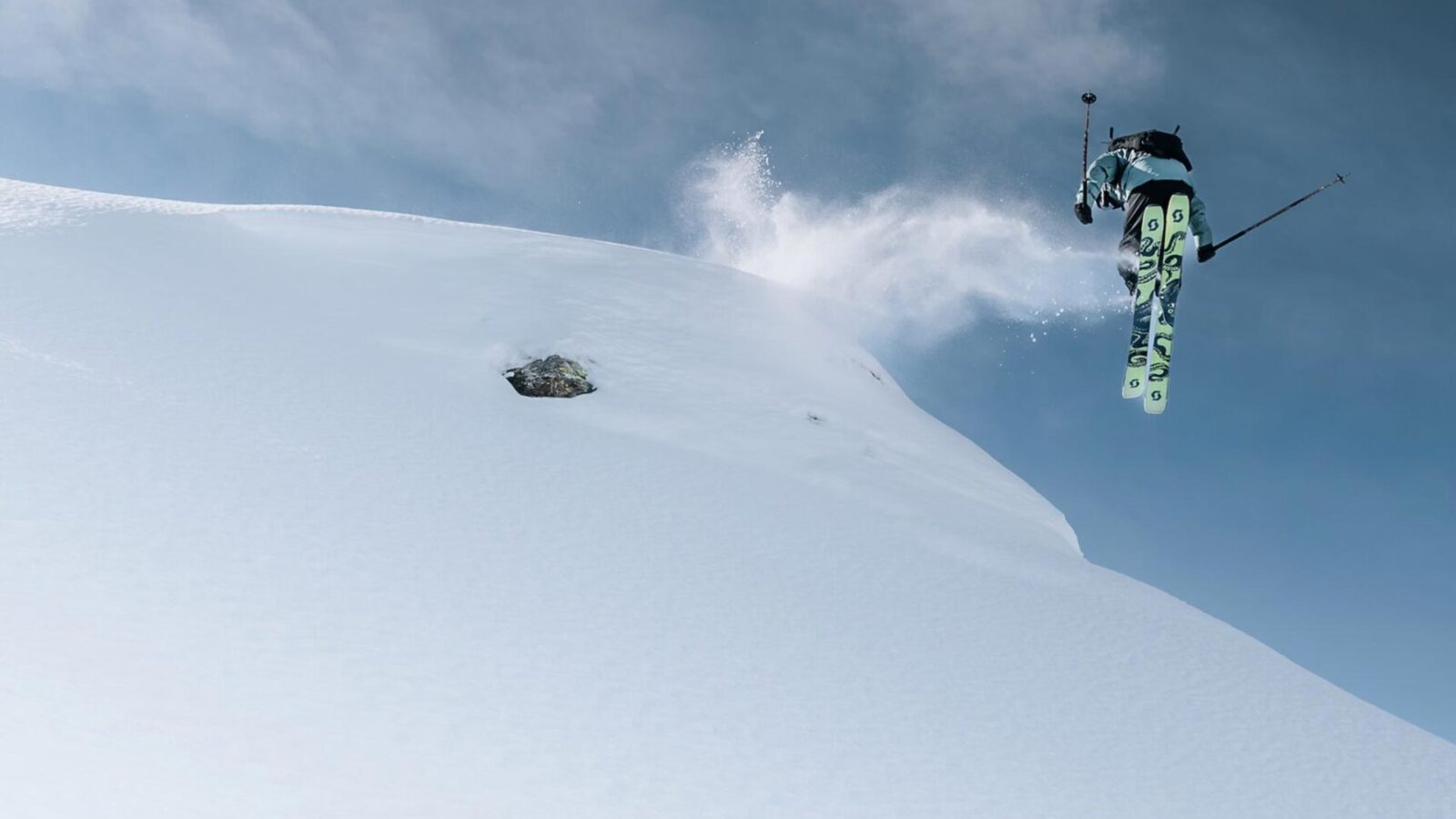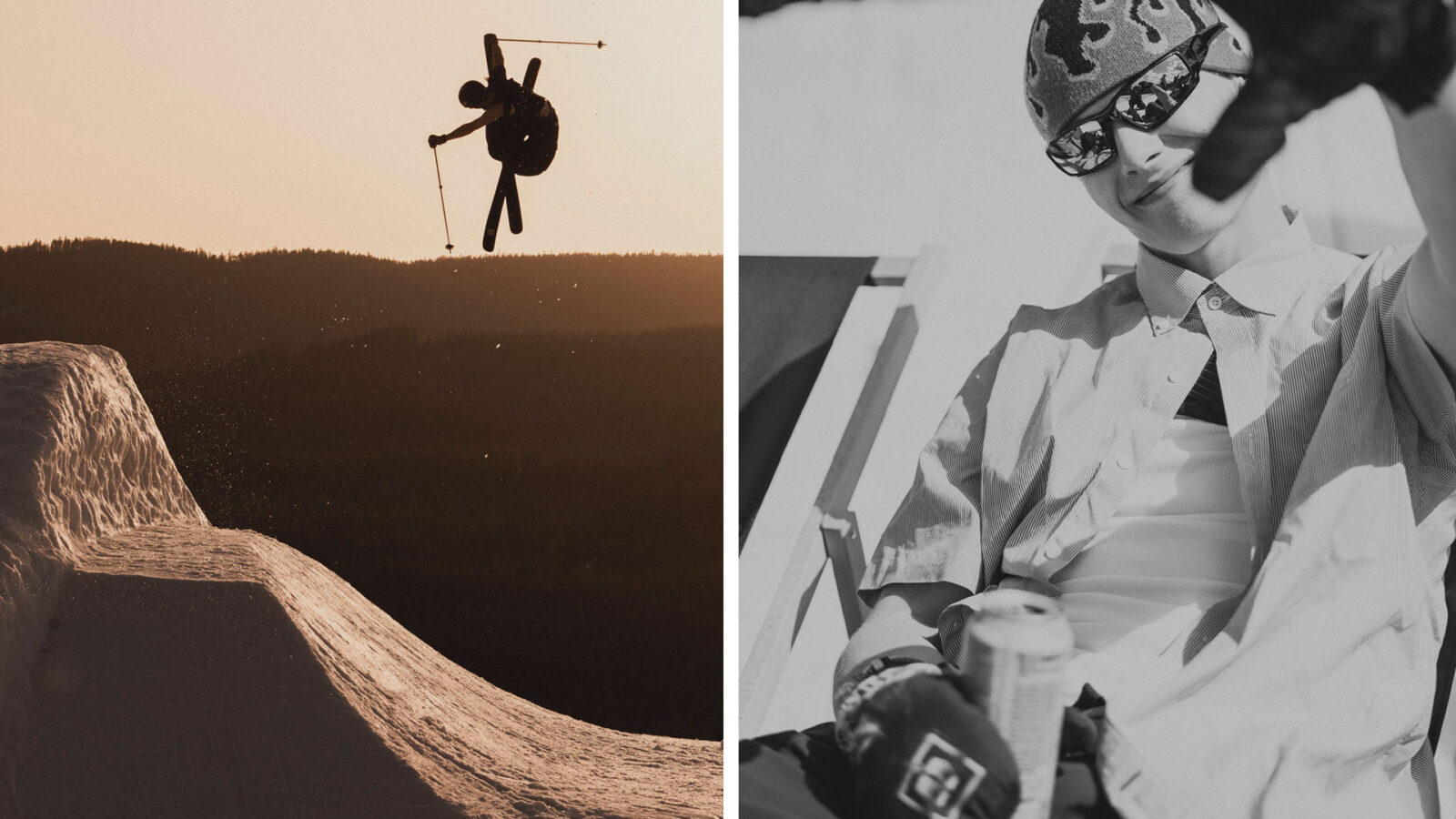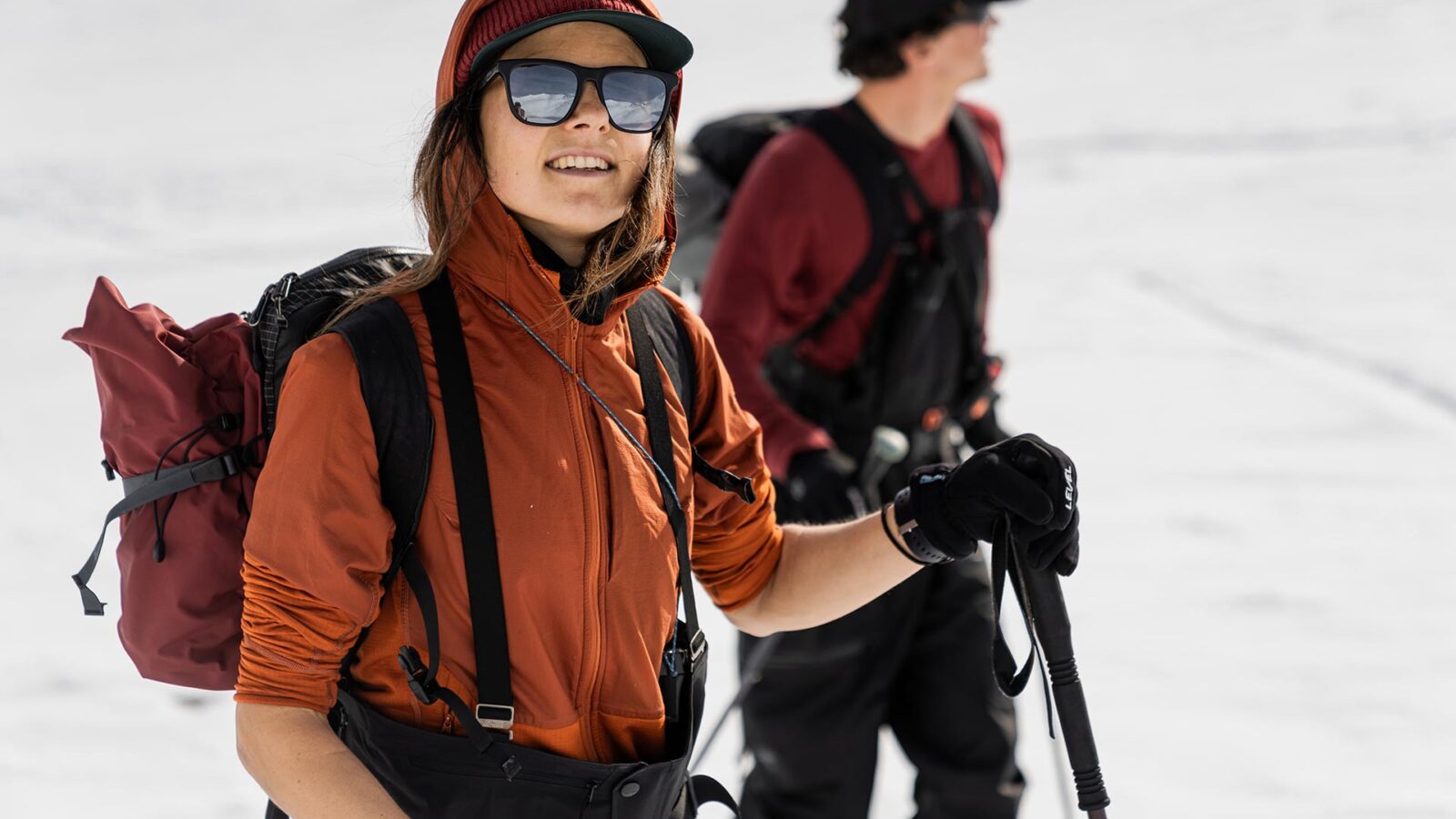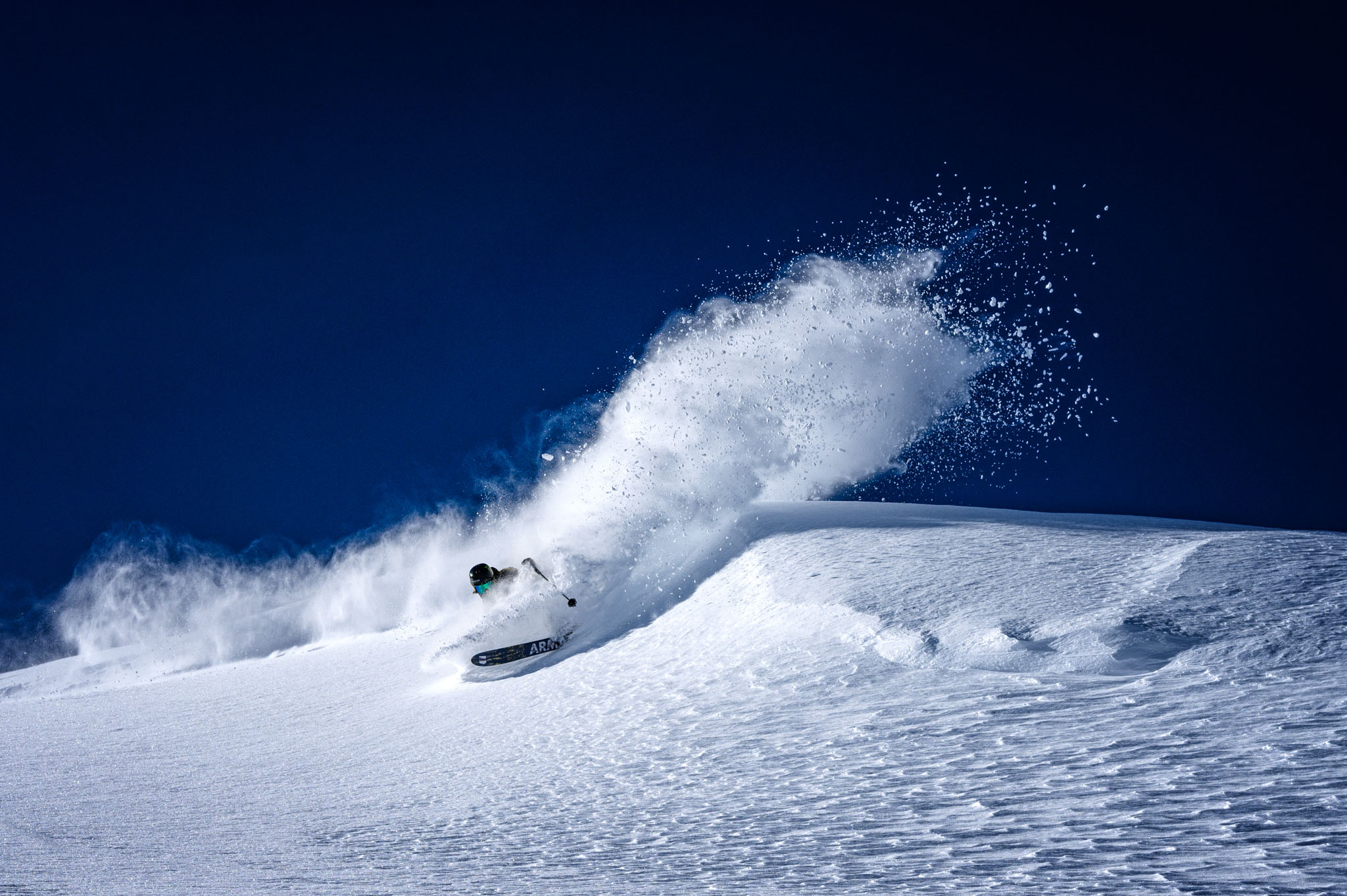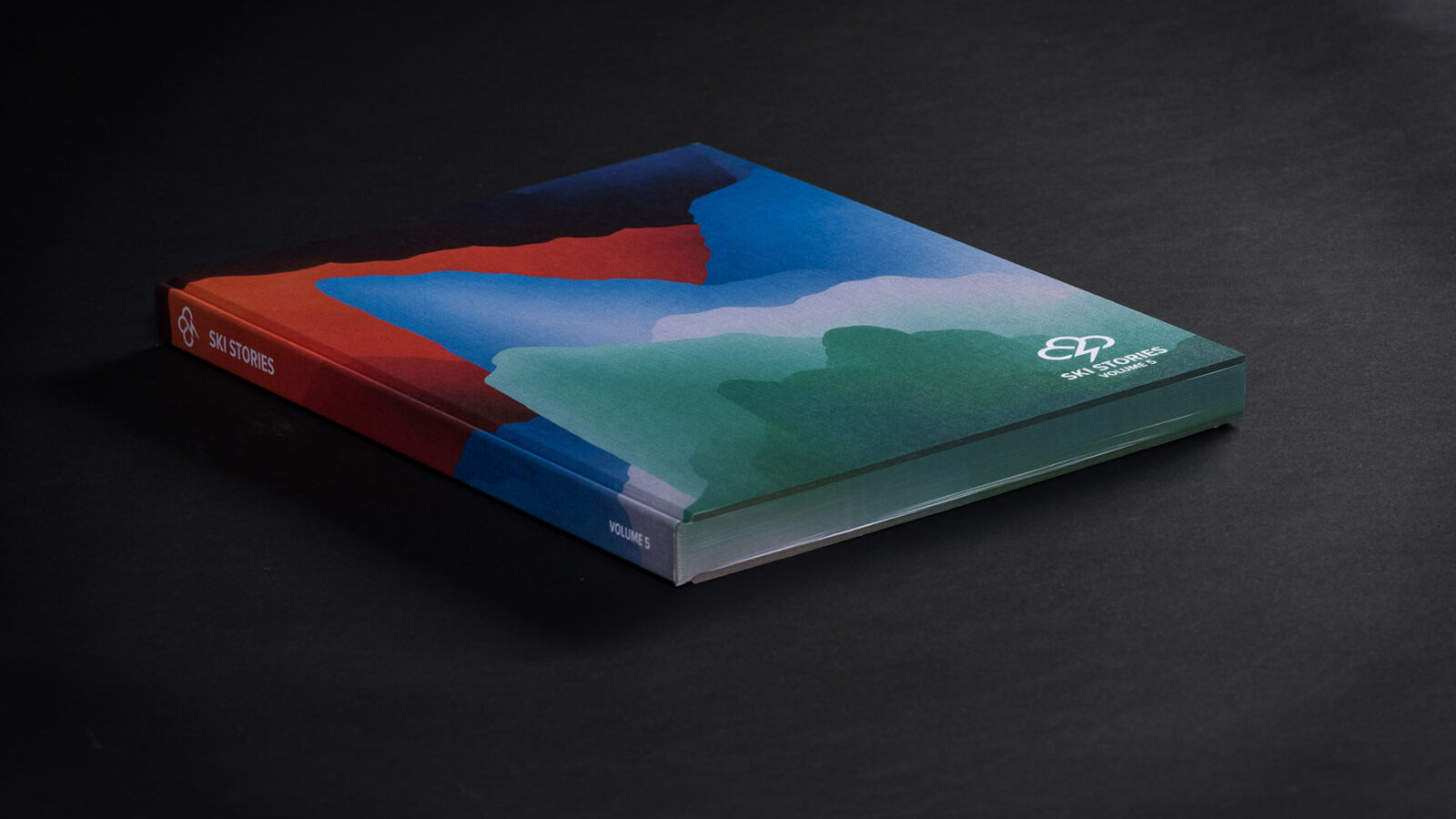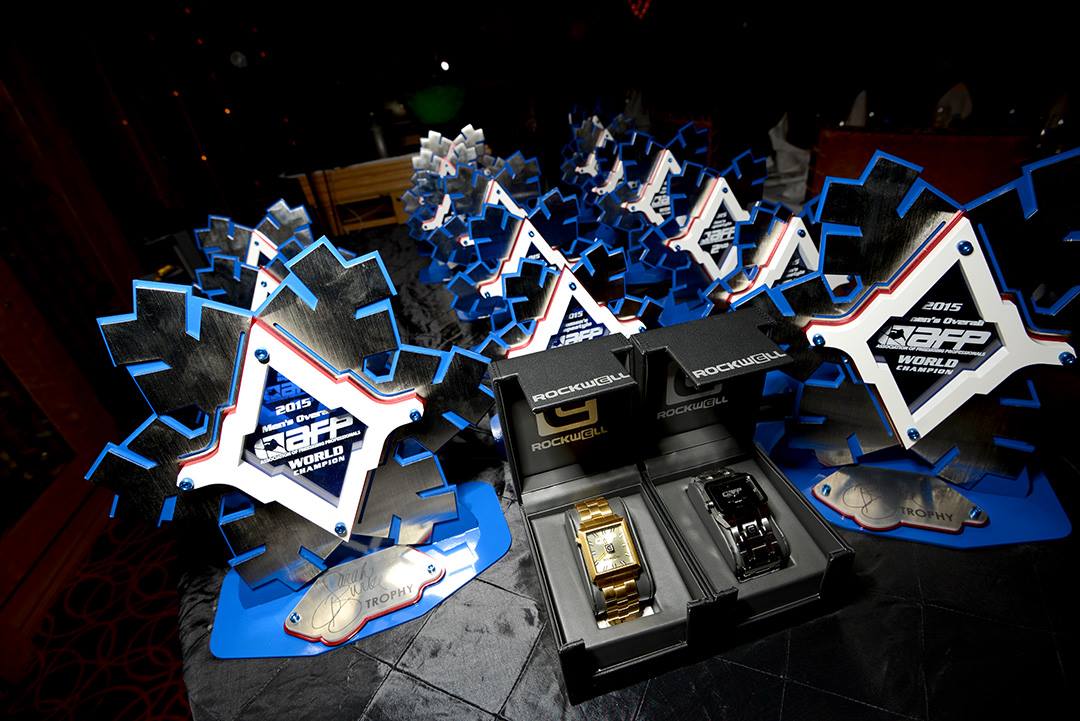
Stories
HighlightEnd of an era
The End of the AFP
I was among many who took the AFP for granted. Since the late 2000s, the Association of Freeskiing Professionals provided overall rankings for slopestyle, halfpipe and big air contests around the globe, in an attempt to to pull an unruly, unregulated sport into some semblance of cohesiveness and presentability.
To be frank, I don’t know that the AFP was taken very seriously by many people. After all, they didn’t run their own tour, but rather aggregated many existing “independent” events into their ranking—charging a sanctioning fee to the event to do so, not to mention membership fees for athletes.
At the same time, the AFP provided a variety of resources that helped the growth of freeskiing worldwide. Their judging system and judge education programs set international standards, and their umbrella lent credibility and visibility to many of the events on the tour calendar.
Whether or not you paid much attention to them, the AFP was always there with freeskiing’s “official” rankings — until all of a sudden, they weren’t anymore. Visit the home page of the AFP today, and you’ll be greeted with this message: “Currently our website, rankings and content are unavailable. We apologize for this, but due to a lack of funding and support, we are no longer able to maintain the site. We are working hard to find a solution.”
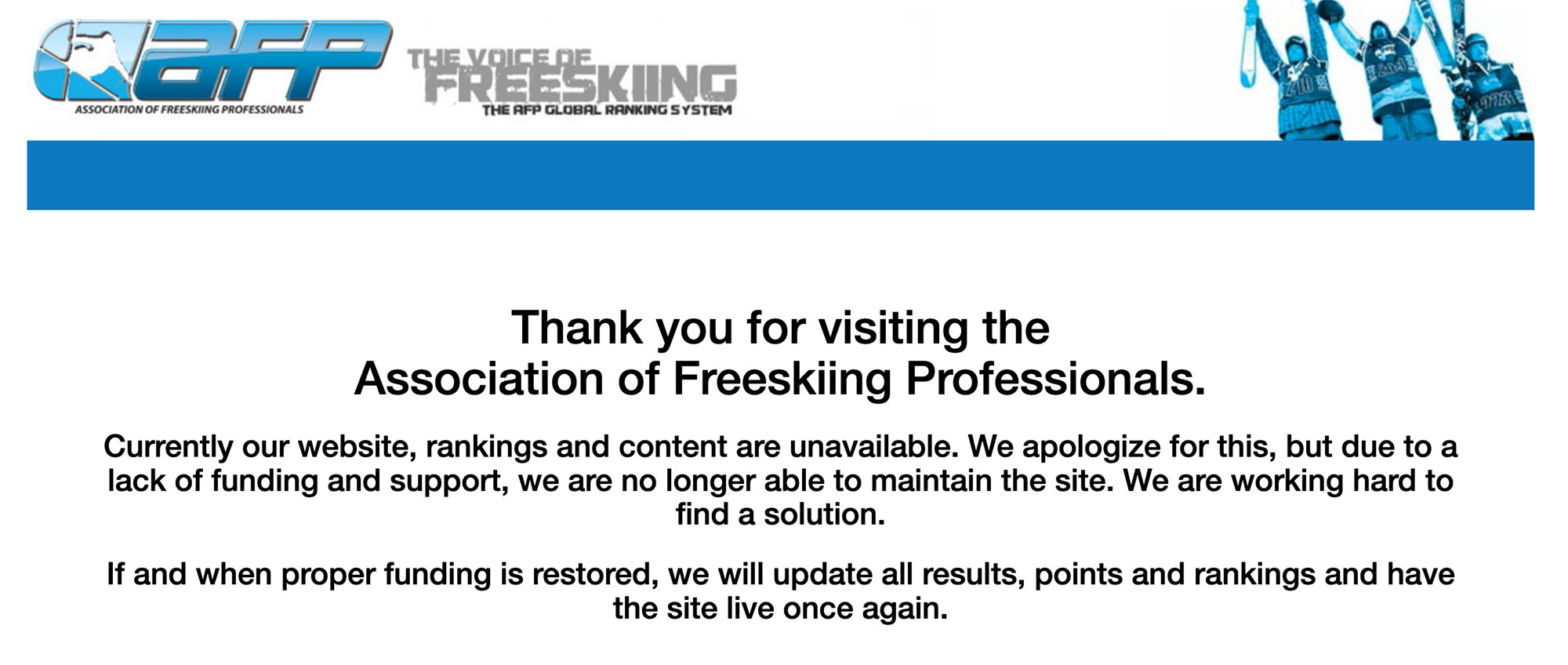
Current standings in the AFP rankings.
Is this really the end of the AFP? I called executive director Eric Zerrenner to find out.
Ethan Stone: Hi Eric, what’s your position at the AFP?
Eric Zerrenner: I was the executive director. I guess I still am, but there’s not a whole lot of executing or directing going on at the moment.
ES: Let’s start with some background. How long has the AFP been around, and what purpose did it serve?
EZ: The idea of the AFP started in 2007 when some of the sport’s founders, athletes and industry people began talking about what was needed as freeskiing continued to grow. The level of riding was getting better and better, and it was becoming more difficult for organizers to accurately identify, select and invite athletes. So the AFP was born from that: a need for a global ranking system that provided the full picture of how these competitive freeskiers were doing. There was nothing like this at the time, and it was way before anyone else was involved in freeskiing, i.e. FIS.
We started formulating a plan about how a ranking system would work. You know, you don’t just start a ranking system. There are so many other things that go into it. There are different levels of events, so how do we categorize them? What are the criteria for certain levels, what sort of points should be awarded? Also, this is a judged sport. If we’re awarding points to athletes at events that we’ve sanctioned at certain levels, one of the criteria has to be a level of judging that’s equal to the level of the event. If you’re going to mandate that, then you almost have the responsibility of creating a judging education and certification program. You can’t demand that an event have a certain level of judging, when there’s nothing out there to say that this level of judge exists! It quickly became more than just throwing riders on a list and saying, “This girl is number 5 in the world, and this guy is number 9.”
The AFP officially launched in 2009 with the rankings and the World Tour calendar. Events applied to us, we evaluated them and gave them a sanctioning level. We put the judging education program together and hosted clinics where we’d train and certify judges. It grew from there. At its peak we had 180-plus events on the World Tour calendar.
"You don’t just start a ranking system. There are so many other things that go into it."
We're in #Japan certifying judges & checking out the #AsiaOpen slopestyle comp. Here's @SteeleSpence in #Hakuba pic.twitter.com/DX49vkd9UH
— AFP (@AFPWorldTour) March 14, 2013
ES: How many members did the AFP have?
EZ: There were probably about 1,500 riders in the overall database with a ranking, but not all of those athletes were paid members. We had a much stronger member base in North America than we did in Europe, I think primarily because we were a North American-based organization.
ES: A few years after the AFP rankings debuted, the FIS World Cup slopestyle circuit got started. How did those two different entities get along?
EZ: We never looked at FIS as an adversary. We didn’t always see eye-to-eye on things, but we never viewed it as an “us-versus-them” kind of thing. There were growing pains as they got started, but eventually they got their act together and started producing good events. We reached out to them and said, “Hey, we have this ranking, your events should be included on this. We’re trying to represent the full landscape of the sport, so we should cooperate as much as we can.”
There was some resistance to begin with. I don’t think they had any real interest in being on our calendar, or necessarily even wanted to acknowledge us publicly. For a couple years the World Cups weren’t on our calendar. There were a few, like the U.S. Grand Prix, because we had a good relationship with US Ski and Snowboard. Some other countries like Switzerland, Norway and New Zealand were very supportive. But not all of them.
It was like, where do we draw the line in the sand? We wanted to have the most comprehensive ranking out there, but in order to do that, how can you not include a World Cup in France, Germany or Sweden? Our mission was to represent freeskiing, and as we got closer and closer to freeskiing in the Olympics, it became imperative to represent everything that was happening out there.
Tune in tomorrow for the @FISfreestyle Slopestyle World Cup at Corvatsch/Silvaplana live on http://t.co/ZG4VGQVJ5k pic.twitter.com/dazh61YvSv
— AFP (@AFPWorldTour) March 13, 2015
ES: You wanted to own it.
EZ: Yeah, and we wanted our rankings to be used! Countries would base part of their national team selection on the AFP ranking, because ours was the most comprehensive ranking out there. One of their other criteria might be the World Cup rankings, but that only reflects FIS events, and we know that the sport has much more to offer than just FIS events. So we made an executive decision to include all World Cups, regardless of their financial support or commitment to our process. We just put ‘em on there. So athletes would go to any World Cup and get AFP points.
ES: What led to the current state of affairs at the AFP?
EZ: The sport was growing and the landscape was changing. The Olympics played a big part of it. World Cups became more important because of the qualification requirements for athletes to get into the Olympics. As the sport became more successful, there was more money involved. Gold medals are worth money—not just for the athlete, but for the country, for the program, for everybody. When that started happening, more stipulations, rules and regulations came into play. If you’re on a national team, you have to play by the rules. You’re required to do so many World Cups, your schedule is set, coaches get more involved. You have nutritionalists and workout programs. Freeskiers became legitimate professional athletes. You are a part of something bigger than just, “hey, let’s go chase snow and hit a few contests here and there,” the way it was in the 2000s.
More World Cups showed up on the calendar, some independent events went away, and the pendulum sort of tilted. But as much as the sport was growing every four years with the Olympic hype, it was kind of shrinking too, because these independent events were disappearing. The Dumont Cup, Jon Olsson’s event, the Austrian Freeski Open—all not out there anymore. So we started looking at what we could do better.
We started talking to TTR [Ticket to Ride World Snowboard Tour] a few years ago about how we can share resources. Could we share certain events? Could the AFP and TTR have a combined world tour finals every year? We’ve duplicated resources in so many areas, so how we can we be smarter about this? We started talking to them more on the event side, then began looking at ways of collaborating on the rankings front. There was talk about FIS wanting to adopt the WSPL—
"Freeskiers became legitimate professional athletes. You are a part of something bigger than just, Hey, let’s go chase snow and hit a few contests here and there, the way it was in the 2000s."
ES: Sorry, what’s the WSPL?
EZ: The World Snowboard Points List. It’s basically the AFP rankings but for snowboarding. A lot of the nations were saying that they wanted a single ranking. We were already collaborating with snowboarding, and we thought this was a great idea. The World Cup snowboard events were already using the WSPL for seeding purposes, so there was already a precedent set.
Collaboratively we approached FIS last spring with a proposal for them to adopt the WSPL for both snowboard and freeski. We flew to Greece to the FIS spring congress and presented this plan. They took a vote on which nations were in support of the concept and whether we should further explore it throughout the summer, and everybody raised their hands and said they’d be in support. So we started work on the plan on how we would migrate this one formula for freeski and snowboard into the FIS system. It would basically be a three-legged stool: we would all have custodianship of the ranking. We would all contribute to it and have access to it. There it is: one ranking for each sport, all events, everything included.
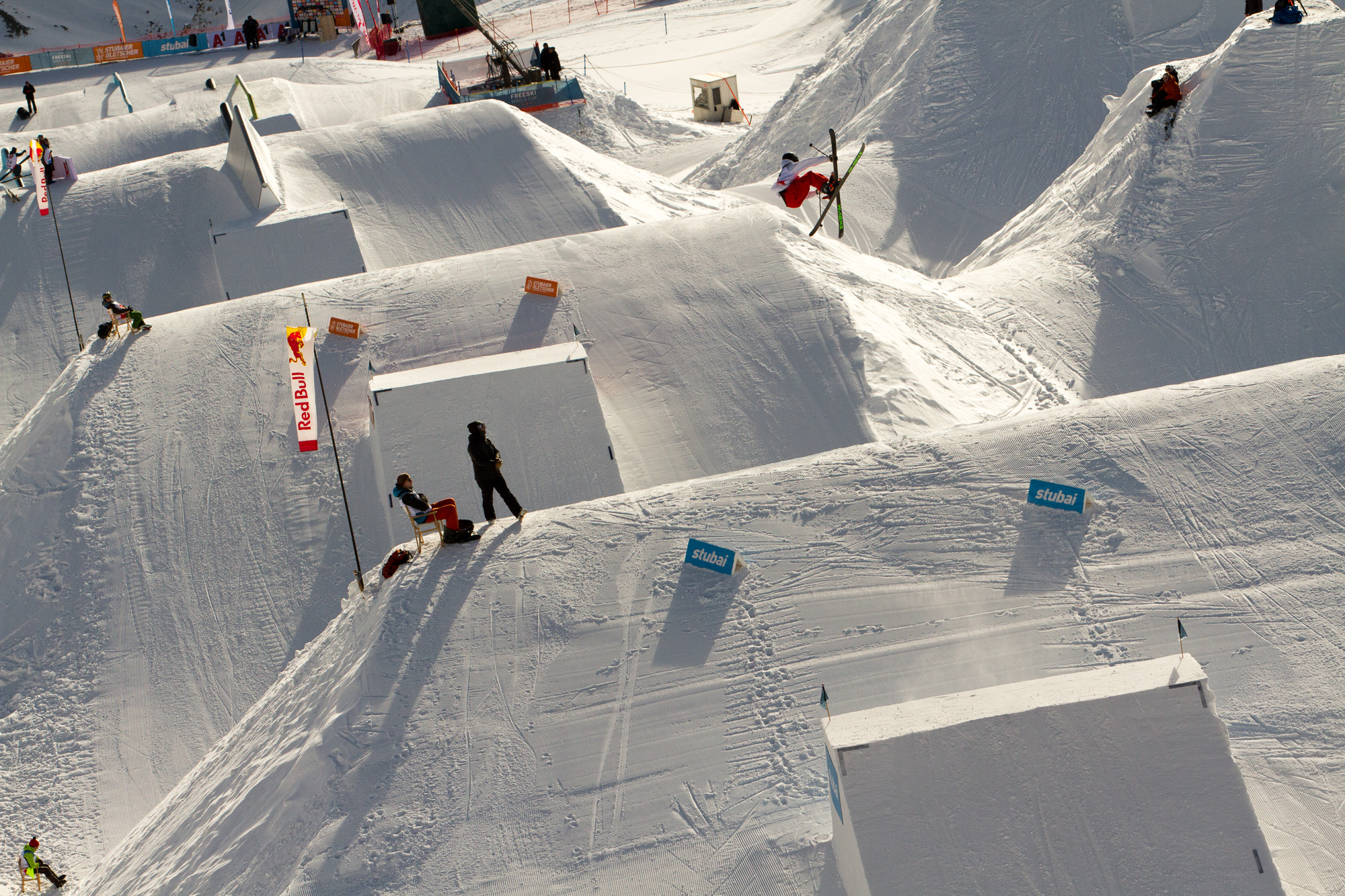
With the AFP out of the game, FIS is currently the only international freeski tour, ranking or judging system in operation today. Location: Stubai World Cup Skier: Patrick Dew
Sounds like a nice plan.
We thought so too. The nations would be on the hook to contribute financially. We had a whole business model that outlined how much it would cost to run the rankings for both sports, with a pretty equitable formula that divided it up among the nations. If you’re Croatia, you wouldn’t pay the same that the US, Canada or Norway pays. But when it came down to a final vote, the freeski nations decided they didn’t want it. And that was pretty much the end of it.
In that first meeting, the nations said they wanted investment into growing skiing and snowboarding at the grassroots level—the level that FIS doesn’t pay much attention to. They wanted help with event planning, getting athletes to start participating, getting judges involved. That’s what TTR and the AFP have done so well. We had our judging education program, so the nations didn’t have to do that—they just turn around and it’s all right there. They said if they could get that kind of return on their investment, then they would be all in. That fit perfectly with our plan, because great—that’s what we do now. We can focus more on the growth of the sport, which we’ve done very successfully in the US with, for example, our partnership with USASA. We sanctioned hundreds of their events at the bronze level, getting kids stoked, getting them on a ranking.
People are like, “Why does it matter if I’m 393rd in the world?” Well, what if you’re eight years old? And the next year you’re 296th; you’ve just improved 80 places. The year after that you’re 183rd. You’re showing progression to your parents, to your local ski club. You’re putting a little edit together, sending it out to get a pair of free skis or goggles…
ES: And you’re on the same ranking list as your ski heroes.
EZ: Exactly. Everything was being woven into our overall objective when we started this thing: growing the sport. It wasn’t just about, “How do we grow this to get into the Olympics?” It’s about getting more kids involved, keeping the sport sustainable, fun and growing in the right direction.
It all sounded really good. Then things dragged on, negotiations started, you get into all the specifics, then you get legal involved… all this took longer than we anticipated. They finally got the deal done with snowboarding, and our plan was to have this agreement in place and bring freeskiing in with it. They got that agreement done in January with the WSPL. Then in March, I had a call with some of the FIS officials, and was told that the freeski nations didn’t see the need to adopt our proposal. If the nations weren’t supporting it, there was nothing FIS could do; they were the messenger at that point. So that was that.
"For all intents and purposes, this is the end of the AFP."
ES: Why do you think they turned down your proposal?
EZ: That’s the question we keep asking ourselves. Maybe we didn’t do a good enough job of communicating the value of what this program was going to mean for them. They all voted in favor of it when we presented it last May. It’s hard to say. Maybe they thought, “We can just do this anyway. What do we need the AFP for?” That’s just pure speculation. I guess we will know in the next season or two, when we see if freeski rankings include non-FIS events.
ES: What’s the status of the AFP now?
EZ: We’re shutting her down. For all intents and purposes, this is the end of the AFP.
ES: That’s a direct result of this deal not working out?
EZ: I wouldn’t say that. The overall support for the AFP has been dwindling for the past 18 months. We were supported financially from athlete membership, industry sponsors, sanctioning fees, and our judging program. Over the last 18 months, all four of those pillars have decreased, which was one of the reasons we were trying to think more strategically. That’s why we initiated this program first with snowboarding, then with FIS.
After the meetings last May, we felt really optimistic and confident that this was going to happen—too much so, in hindsight. In lieu of scratching and clawing to get industry sponsors last summer and hitting up events for sanctioning fees, we thought we were going to be funded by the nations through this FIS program. When that didn’t happen, we were just out of money.
Calling all athletes: #AFPWorldTour membership is now $40 during the month of September. Register or renew here: https://t.co/H706ZULtOp pic.twitter.com/jHBmpnxxgG
— AFP (@AFPWorldTour) September 8, 2017
ES: You had all your eggs in that one basket.
EZ: Pretty much, yeah. And at that point it became pretty clear. No one kicked down our door and said, “You guys can’t go away. How do we help keep this going?” We certainly got calls and emails saying, “That’s too bad, this shouldn’t be happening, I can’t believe this is what it’s come to.” But no one said, “How much is it going to take to keep this up and running?” None of our industry sponsors, athletes, events, whatever. So as hard as it is, you have to take pause and say, “Huh, okay.”
ES: What kind of effect will this will have on the sport?
EZ: We’ll see. I mean, no one’s daily life is going to be altered by this. There are still great events out there, and I think the sport is super healthy. There are still people that care about the sport and the direction enough that it’s still going to grow and thrive. The thing that we provided was a ranking that really did include every event, so any athlete, media, sponsor or casual fan could go look at that and see that this person was at this position in whatever discipline, and that was kind of undisputed.
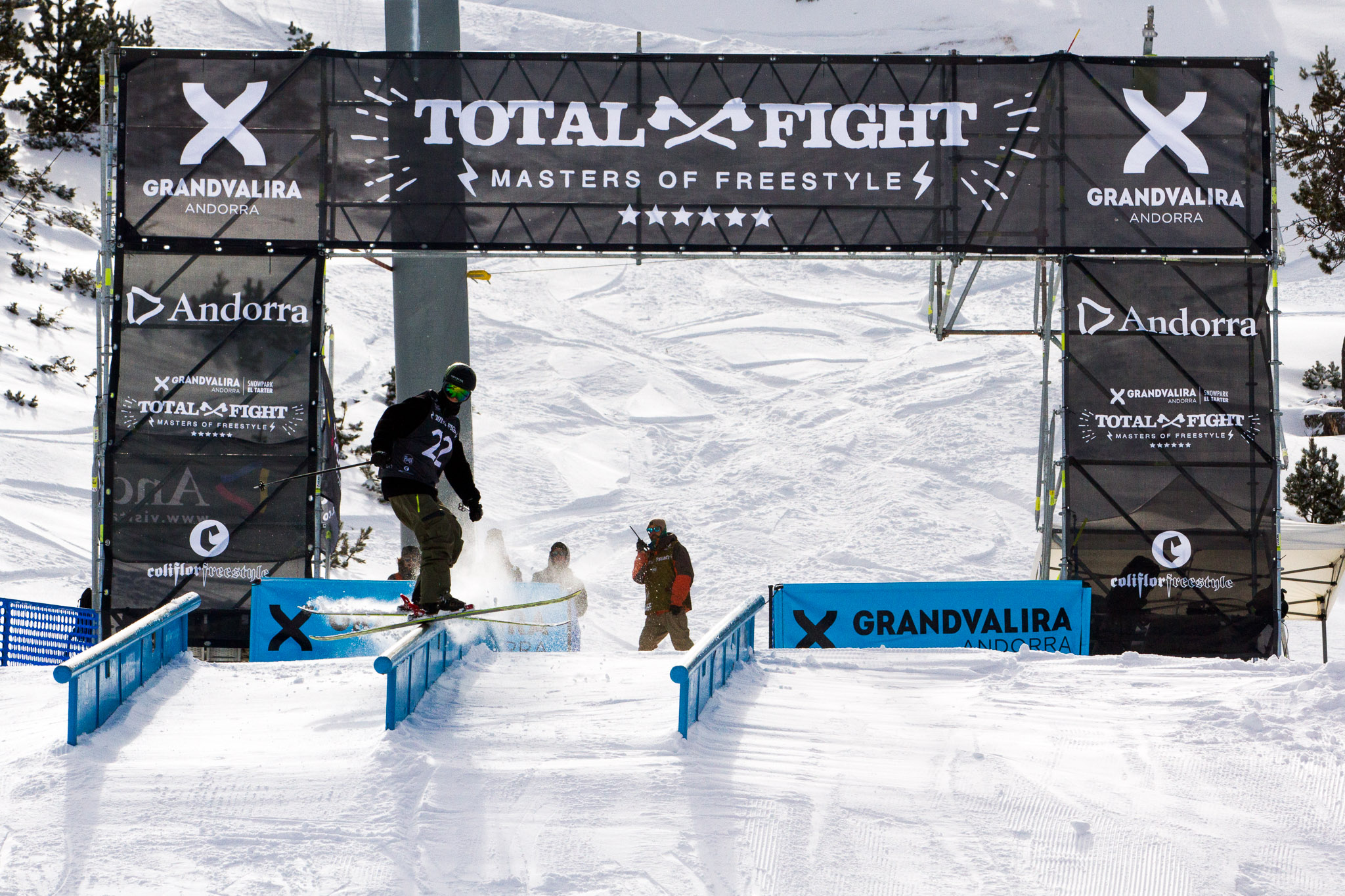
Non-FIS events like the Total Fight slopestyle in Andorra relied on the AFP´s umbrella to lure athletes and sponsor dollars. "We´ll have to see what to do now that the AFP is gone," said organizer Marc Bajona Carrera.
ES: Is this the story of the evil FIS cornering the AFP out of the business?
EZ: I don’t look at it that way at all. Like I said earlier, we never looked at FIS as the enemy. I have good relationships with a lot of key people in FIS, and I know that they’re great people who want to do right by the sport. But they also have to do right by the nations that make up FIS. Talk about political waters to navigate. That’s a big job.
I’m disappointed because I do feel like this was the right direction, not just for freeskiing but for FIS, the AFP and snowboarding. I thought this was going to be a big step forward for all of us. This was how we were going to drive this thing forward: representing all corners of the sport, sharing the collaborative goal of making this better and more appealing to a wider audience. That brings more dollars into the sport, which can be reinvested, we can continue to grow, and it’s better for everybody.
So no, there are no hard feelings. This is not why the AFP is going away. As much as I’d love to still be operating, supporting the sport and the athletes and working with FIS and the nations on making our sport better, they decided they didn’t want that, and I’ll respect that.
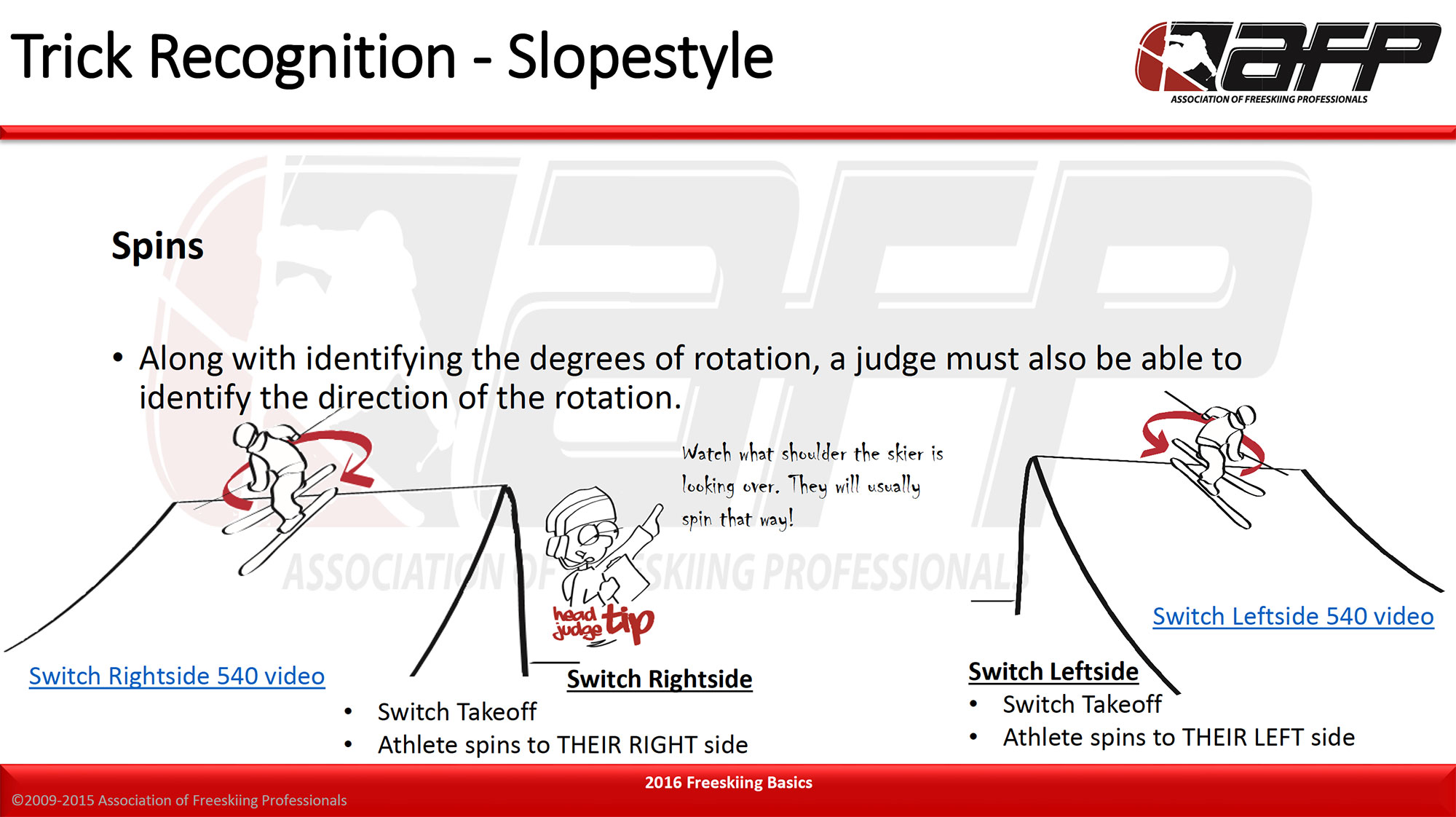
A slide from the AFP´s "basics" manual for judges. The AFP´s judging materials are still available online (link below).
ES: How do you hope that the AFP will be remembered?
EZ: I hope that we’ll be remembered for being fully dedicated and committed to making freeskiing as good as it can be for the athletes and the community at large. I hope that we created a super solid foundation that continues to grow and thrive and prosper, and when people reflect on that, they’re able to look back and say, “Man, we would not be where we are today if we didn’t have that organization working to make this possible.”
The AFP's judging materials are still online, for the time being, at afpjudges.com.
